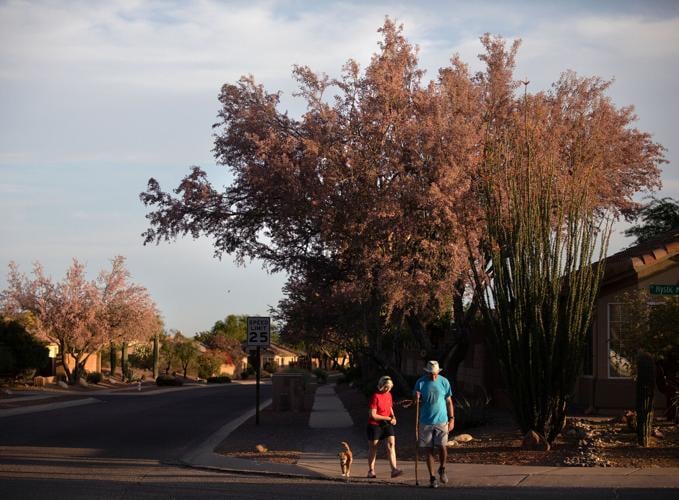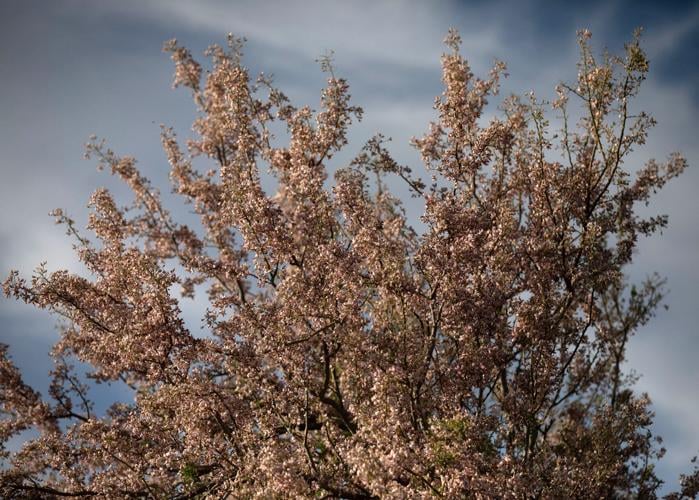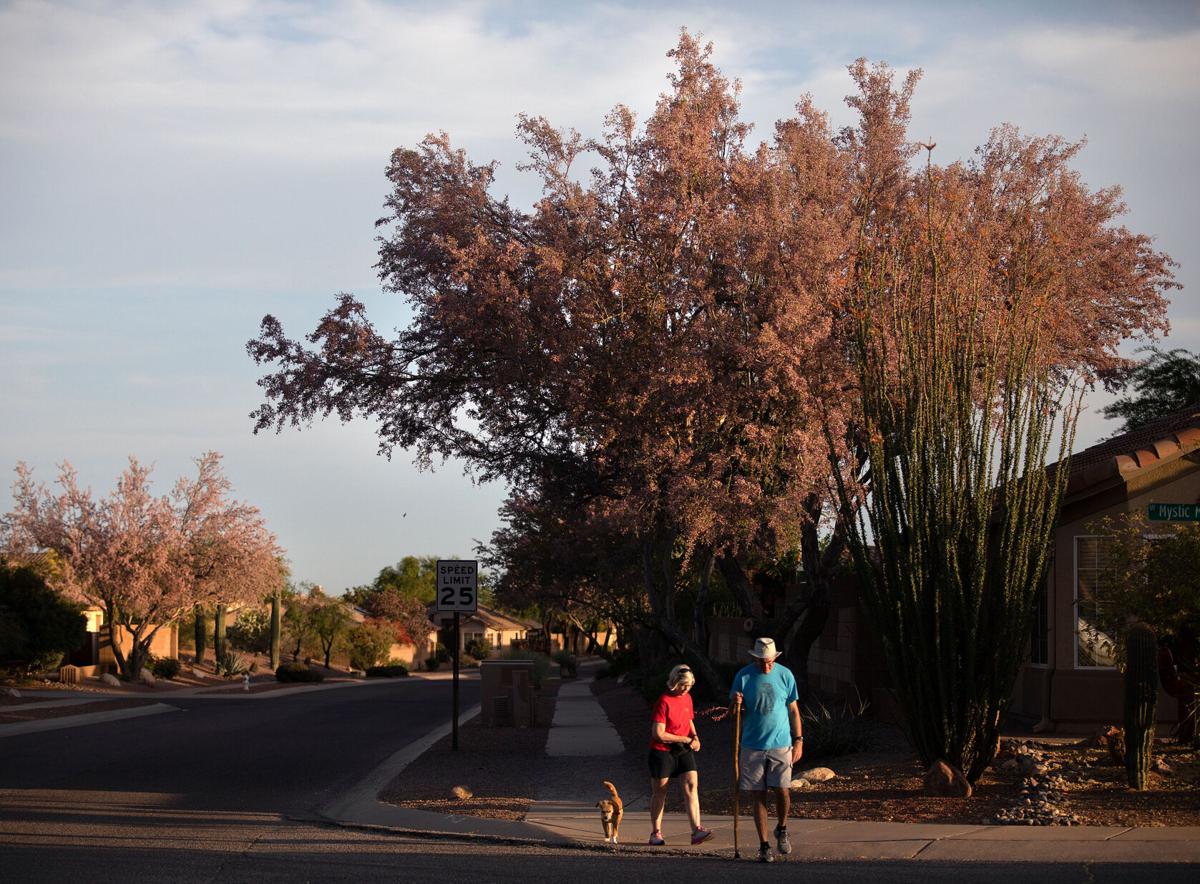Parts of Tucson are looking pretty in pink, as local ironwood trees dress up for what botanists are calling one of the best blooms in years.
“It has been since before COVID that we have had such a tremendous ironwood tree bloom in Tucson and vicinity,” said John Scheuring, conservation committee chairman for the Arizona Native Plant Society. “This year every large tree is blooming from top to bottom, in town and out in the desert areas.”
Some of the showiest examples can be found in northwest Tucson and Oro Valley, along what he called the “thermal belts” up slope from the Cañada del Oro and other washes, where hard, tree-killing freezes are less likely in the winter.
The Arizona-Sonora Desert Museum has also taken note of this year’s show. “The ironwood trees are blooming now, and we highly recommend venturing outside to appreciate them!” the museum told its Facebook followers on Wednesday.

Some of the showiest examples of ironwood trees in bloom can be found in northwest Tucson and Oro Valley, in upslope “thermal belts.”
Ironwoods and their soft, lilac-colored blossoms often get overlooked amid the palo verde’s bright yellow explosion and the saguaro’s regal white crown of flowers, Scheuring said. But this crucial species serves as a nursery for a wide range of other desert plants that find shade, protection and welcoming soil beneath its canopy.
Scheuring called the ironwood the “grand old man” of the Sonoran Desert, with an estimated lifespan of 800 years or more. The trees grow slowly, producing wood so hard and heavy that it sinks in water and trunks so resistant to rotting that they can last for as long as 1,600 years.
Ironwood trees are almost exclusively found in the Sonoran Desert of Arizona, California and Mexico, where they play the role of what experts call a “habitat-modifying keystone species.”
Some of the greatest concentrations of ironwoods in the U.S. can be found at two locations right here in Pima County: in the Tucson Mountain District of Saguaro National Park and around Cocoraque Butte and the Roskruge Mountains, within the aptly named Ironwood Forest National Monument on the west side of Avra Valley.
The trees are “frost limited,” so places like Sabino Canyon tend to be too cold to support them, said Jim Malusa, research scientist with the University of Arizona School of Natural Resources and the Environment.
But that appears to be changing.
“Back in the 1970s I never saw ironwood trees in town because they couldn’t survive the winters,” Malusa said. “But because the city has warmed — especially the nights — ironwoods are becoming a common landscaping plant.”
According to Tucson horticulturalist Mark Dimmitt, at least some ironwood blossoms and fruit can be found annually, but widespread flowering events seem to occur in unpredictable bursts every couple of years.
Or at least that’s how it used to be. Lately, big blooms like this one seem to be happening more frequently, Dimmitt said.
What exactly triggers ironwood trees to flower is not well understood, Malusa said. Some plants are wired to bloom when resources are abundant, while others push out blossoms when they are stressed to ensure that at least their seeds will survive.
“Ironwood trees seem capable of flowering under good times and bad, and for many years,” Malusa said. “They’re the Mick Jagger of desert trees.”
The Arizona desert is so beautiful and is in full bloom. Check out a few blooms from around Tucson.






